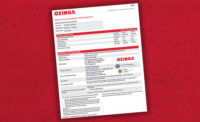Transportation bottlenecks often occur in Bangladesh, where numerous rivers flow through its cities. The Karnaphuli River, for instance, separates the Chittagong district into two parts, dividing the city and the port from the heavy-industry area. With the district's three existing bridges congested and unable to meet their current traffic loads, the state-owned Bangladesh Bridge Authority has invited expressions of interest from international consultants for a 3.4-kilometer-long, multi-lane road tunnel under the Karnaphuli River, approximately 2 km downstream from Chittagong’s airport. The project cost is estimated at $800 million; the project is expected to take four years to build.
Respondents to the expression-of-interest request are asked to provide a plan for land acquisition and resettlement as well as an environmental impact assessment. The job's scope includes supervision activities, design review and design of additional works that may be required during the project. China Communication Construction Co.-Ove Arup and Partners Hong Kong in 2011 were hired to conduct a feasibility study, which was submitted the following year. Interestingly, a memorandum of understanding was signed between the governments of Bangladesh and China in June 2014, with the Chinese government agreeing to construct the tunnel on a government-to-government basis with funding from the Export-Import Bank of China.
The tunnel will be built under the river to avoid the Karnaphuli riverbed's siltation, a major threat to the functioning of the busy Chittagong Port, situated at the mouth of the river. The tunnel will be 3,400 meters long, the west-bank approach road will be 740 m, and the east-bank approach road will be 4,952 m. The project is likely to be launched by the end of the year, the 40th anniversary of diplomatic relations between the two countries, sources say.
Dhaka sought $9 billion in financial support from Beijing last year for 15 development projects for the 2014-2018 time period to help support railway, energy, power, water supply, sanitation and other infrastructure developments.
The latest news and information
#1 Source for Construction News, Data, Rankings, Analysis, and Commentary
JOIN ENR UNLIMITEDCopyright ©2024. All Rights Reserved BNP Media.
Design, CMS, Hosting & Web Development :: ePublishing



Post a comment to this article
Report Abusive Comment